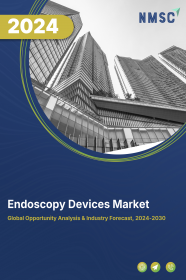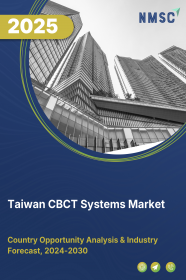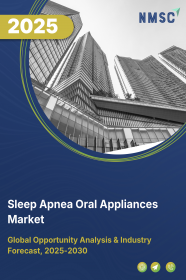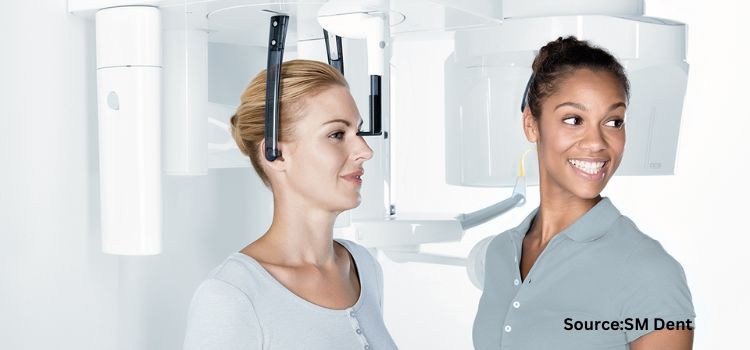
Endoscopy Devices Market by Product Type (Endoscope, Mechanical Endoscopic Equipment, Visualization and Documentation Systems, and Others), by Application (Bronchoscopy, Arthroscopy, Laparoscopy, Urology endoscopy, Neuro endoscopy, Gastrointestinal endoscopy, Gynaecology endoscopy, ENT endoscopy, and Others), and by End User (Hospitals, Ambulatory Surgery Centres, Clinics, and Others) – Global Opportunity Analysis and Industry Forecast 2024-2030
US Tariff Impact on Endoscopy Devices Market
Trump Tariffs Are Reshaping Global Business
Market Definition
The global Endoscopy Device Market size was valued at USD 39.70 billion in 2023 and is predicted to reach USD 71.18 billion by 2030 with a CAGR of 8.7% from 2024-2030. Endoscopy is a minimally invasive medical procedure that involves the use of a thin, flexible tube equipped with a tiny camera and light source to visually examine the interior of various body structures, such as the digestive tract, respiratory passages, or joints.
This innovative technique allows healthcare professionals to diagnose and treat a wide range of conditions, providing detailed and real-time imaging without the need for extensive surgery, making it an invaluable tool in modern medicine.
Market Dynamics and Trends
The increasing number of elderly patients with gastrointestinal and colon-related diseases such as stomach ulcers and colorectal cancer (CRC) that require endoscopy to diagnose and treat is driving the growth of the market. For instance, according to the American Cancer Society (ACS), there were approximately 153,020 new cases of colorectal cancer (CRC) in the United States by the end of 2023.
Furthermore, growing advancements in less invasive endoscopy procedures that reduce the need for surgeries, making the process more comfortable for patients, are further driving the growth of the market.
For instance, in May 2023, Keio University along with Air Water Inc. developed an ultra-thin endoscopy device using specialized plastic fiber technology, which can display internal images of the body including joints to external screens. The slim profile of this device reduces patient discomfort and is designed for single-time use where doctors can proficiently observe and treat patients, eradicating the need for general anesthesia or hospitalization.
However, strict regulatory requirements and lengthy approval processes can delay the wide adoption of endoscopy devices, in turn restraining the growth of the market. On the contrary, the introduction of Artificial Intelligence (AI) in the use of endoscopy devices is poised to revolutionize medical diagnostics and treatment, presenting ample opportunities shortly.
AI-powered endoscopy holds the promise of enhancing accuracy, efficiency, and patient outcomes in numerous medical procedures. By leveraging advanced algorithms and machine learning techniques, AI can assist healthcare professionals in the real-time analysis of endoscopic images and videos, enabling early detection of abnormalities, precise localization of lesions, and personalized treatment planning.
For instance, according to a study conducted in Oxford University in February 2023, Artificial intelligence (AI) is proving to be valuable in the field of inflammatory bowel disease research, during endoscopic procedures. AI can aid doctors in accurately evaluating the severity of inflammation in the gut, which is crucial for patient care and clinical trials.
Market Segmentation and Scope of Study
The endoscopy device market is divided based on product type, application, end users, and region. Based on product type, the market is categorized into endoscopes, mechanical endoscopic equipment, visualization and documentation systems, and others.
Based on application, the market is divided into bronchoscopy, arthroscopy, laparoscopy, urology endoscopy, neuro endoscopy, gastrointestinal endoscopy, gynecology endoscopy, ENT endoscopy, and others.
Based on end users, the market is classified into hospitals, ambulatory surgery centers, clinics, and others. Regional breakdown and analysis of each of the aforesaid segments includes regions such as North America, Europe, Asia-Pacific, and the Rest of the World (RoW).
Geographical Analysis
North America holds the dominating share of the endoscopy device market during the forecast period. The rise in endoscopy device use is driven by the increasing prevalence of chronic conditions such as cancer, diabetes, cardiovascular diseases, and functional gastrointestinal disorders that require endoscopy during diagnosis and treatment.
Additionally, the increasing elderly population, which is more susceptible to these chronic diseases, is contributing to the growing adoption of endoscopic devices in this region. For instance, in January 2023, the National Library of Medicine stated that the number of people with chronic disease to increase by 50.36% from 2023 to 2050 in the U.S.
Moreover, people aged 50 years and older are expected to increase by 61.11% in the coming years. These factors are influencing the demand for endoscopy devices and equipment in North America.
Also, the increasing collaborations between endoscopy device manufacturers and academic medical centers, to work towards improving arthroscopic surgeries, are boosting the endoscopy device market in this region. For instance, in, Nov 2022, Lazurite and the Hospital for Special Surgery (HSS) collaborated to advance arthroscopic surgeries, using Lazurite's wireless surgical camera system.
This new device is approved by FDA for the application in general endoscopy. Under this collaboration, the company aims to enhance surgical techniques including the creation of new arthroscopic technologies that can be beneficial for the endoscopy device industry.
On the other hand, the Asia-Pacific region is the fastest-growing region for the endoscopy device market due to increasing initiatives by regional market players to expand their manufacturing and R&D capabilities across multiple countries in this region. For instance, in July 2023, Japan’s Hoya Group established an endoscope manufacturing, and R&D plant along with a service centre in Shanghai, China.
This facility will produce advanced medical devices for the endoscopy market in China, and the service center will ensure quick customer support and issue resolution. This move aims to provide innovative endoscopic solutions to Chinese medical institutions.
Moreover, the increasing government initiatives in countries such as China, Japan, and India influence the adoption of endoscopy devices in the region, propelling the endoscopy devices market growth.
For instance, the Japan Agency for Medical Research and Development (AMED) aims to subsidize the research and development of an advanced information-assisted endoscopic surgery system in the country by the end of 2023.
This project will be conducted in collaboration with the National Cancer Center Hospital East, Oita University's Faculty of Medicine, Fukuoka Institute of Technology's Faculty of Information Engineering, and the University of Tokyo's Faculty of Engineering as research and development contributors.
Competitive Landscape
Various market players operating in the endoscopy device industry are Olympus Corporation, Medtronic Inc., Boston Scientific Corporation, Stryker Corporation, Smith & Nephew Plc, Karl Storz SE & Co. KG, Fujifilm Holdings Corporation, Johnson & Johnson, Hoya Corporation, Nipro Corporation, and others. These market players are opting for various strategies such as business expansion and collaborations to maintain their dominance in the global endoscopy device market.
For instance, in March 2023, Medtronic Inc. and NVIDIA collaborated to develop an AI platform for medical endoscopes and incorporate NVIDIA's technology into Medtronic's real-time AI endoscopy device. By leveraging AI capabilities, the banner aims to improve the effectiveness of endoscopic procedures and provide more precise medical diagnoses and treatments.
Moreover, in April 2023 Olympus invested approximately USD 40.6 million in a new endoscope parts factory in Suzhou, China, aiming to enter the medical care market. This move lines up with China's aging population and the company's strong presence in the country's medical sector leading to widespread adoption of their devices, helping the market to grow.
Key Benefits
-
The report provides quantitative analysis and estimations of the endoscopy device market from 2024 to 2030, which assists in identifying the prevailing market opportunities.
-
The study comprises a deep-dive analysis of the current and future endoscopy device market trends to depict prevalent investment pockets in the market.
-
Information related to key drivers, restraints, and opportunities and their impact on the endoscopy device market is provided in the report.
-
A competitive analysis of the players, along with their market share is provided in the report.
-
SWOT analysis and Porter's Five Forces model are elaborated in the study.
-
Value chain analysis in the market study provides a clear picture of the roles of stakeholders.
Endoscopy Devices Market Key Segments
By Product Type
-
Endoscope
-
Mechanical Endoscopic Equipment
-
Visualization and Documentation Systems
-
Others
By Application
-
Bronchoscopy
-
Arthroscopy
-
Laparoscopy
-
Urology endoscopy
-
Neuro endoscopy
-
Gastrointestinal endoscopy
-
Gynecology endoscopy
-
ENT endoscopy
-
Others
By End User
-
Hospitals
-
Ambulatory Surgery Centers
-
Clinics
-
Others
By Region
-
North America
-
The U.S.
-
Canada
-
Mexico
-
-
Europe
-
The U.K.
-
Germany
-
France
-
Italy
-
Spain
-
Denmark
-
Netherlands
-
Finland
-
Sweden
-
Norway
-
Russia
-
Rest of Europe
-
-
Asia-Pacific
-
China
-
Japan
-
India
-
South Korea
-
Australia
-
Indonesia
-
Singapore
-
Taiwan
-
Thailand
-
Rest of Asia-Pacific
-
-
Rest of the World (RoW)
-
Latin America
-
Middle East
-
Africa
-
REPORT SCOPE AND SEGMENTATION:
|
Parameters |
Details |
|
Market Size in 2023 |
USD 39.70 Billion |
|
Revenue Forecast in 2030 |
USD 71.18 Billion |
|
Growth Rate |
CAGR of 8.7% from 2024 to 2030 |
|
Analysis Period |
2023–2030 |
|
Base Year Considered |
2023 |
|
Forecast Period |
2024–2030 |
|
Market Size Estimation |
Billion (USD) |
|
Growth Factors |
|
|
Countries Covered |
28 |
|
Companies Profiled |
10 |
|
Market Share |
Available for 10 companies |
|
Customization Scope |
Free customization (equivalent to up to 80 working hours of analysts) after purchase. Addition or alteration to country, regional, and segment scope. |
|
Pricing and Purchase Options |
Avail customized purchase options to meet your exact research needs. |
KEY PLAYERS
-
Olympus Corporation
-
Medtronic Inc.
-
Boston Scientific Corporation
-
Stryker Corporation
-
Smith & Nephew Plc.
-
Karl Storz SE & Co. KG
-
Fujifilm Holdings Corporation
-
Johnson & Johnson
-
Hoya Corporation
-
Nipro Corporation

















 Speak to Our Analyst
Speak to Our Analyst





















